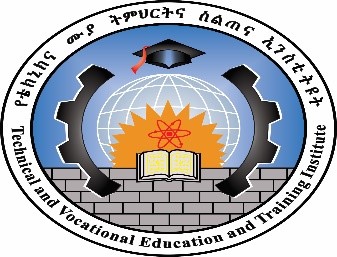Skilling TVET Teachers-To Drive Quality in Technical and Vocational Skills Development


Institution: Federal TVET Institution
Ethiopia is a country found in the horn of Africa (East Africa) with overall Population of 108,000,000 and land area of1.1 million Km2. Ethiopian Economy is agrarian, with 80% of the Ethiopian population is living in rural areas. According to the Central Statistics Agency (CSA), youth unemployment is 25.2%. The country is undergoing an expansive industrialization agenda, which is demonstrated by foreign direct investment and construction of Industrial parks and integrated Agro-industrial parks in different parts of the country. In 2008 Ethiopia embarked National TVET reform and adopted the outcome-based TVET system; where there is a recognition of competencies acquired in any settings.
According to the Ethiopian Education and Training policy; 80% of secondary school leavers will join the TVET track after grade 10 which ranges from level one to five, the other 20% will proceed to grade 11 and 12, which is a preparatory program for University. However, Currently, 65% to 70% of the high school completers are joining TVET track according to enrollment data from Federal TVET Agency. Many youths, school dropouts, and other citizens pass through nonformal TVET training program.
Teacher competence is a critical element affecting the quality of TVET training. Ethiopia established a National TVET teachers Training Institute in 2011, Federal TVET Institute(FTVETI), to respond to the need for TVET teachers given an expansion of TVET institutions in the country. The FTVETI provides teachers training in the form of Bachelor and Master of sciences degree in TVET teachers education.
The institute recognizes that the development process is an ongoing one and has therefore worked towards the institutionalization of continuous professional development (CPD), achieved through the Further Training Centre within the teachers training institute. The task of the training center is to identify the technical and pedagogical skills gap, from different polytechnics and local governments and develop tailor-made training interventions at different levels. The FTVETI delivers some of these training interventions, and others in collaboration with companies/Industries.
The FTVETI has agreements with companies in the form of Memorandums of Understanding (MOUs) on how to mutually benefit from the agreement. Based on these MOUs, students will get training in companies. The school will also provide some incentives like training of company staff in school and others. Training delivery is focusing on project-based learning with a focus on hands-on training, building the capacity and experience of the teachers to support trainees to develop products and services that will facilitate their self-employment and employability. The teacher trainees participate in internships and visits to companies/industries; through the exposure to this “real-world” experience, they develop project ideas to produce goods and services.
- There are 670 public and 952 private TVET Institutions.
- Currently, the National TVET teachers training Institute has more than 9,000 trainees under different programs.
- There are more than 24,000 Certified school teachers in public institutions.
- There are more than 30,000 certified teachers in the companies/Industry which train apprentices and serve as guest instructors in schools.
- Annual enrollment is 450,000 trainees in the formal and around 800,000 trainees in the nonformal (short term) training,
- Out of these total 51% enrollment are females
- 78% of formal & 82% of non-formal training completers get a job within one year after graduation according to data from federal TVET Agency.
- Self-employment is at a good start in Ethiopia since there is a separate policy for Micro and Small Enterprises development, which provides many start-up support for TVET graduates such as credit facility, production space, training support, etc..
- The pedagogy required for TVET teachers is different from that of school teachers; the training process must address this professional need.
- In Ethiopia, most universities do not implement hands-on training; the Institute, through its approach, has therefore addressed this gap and at the same time, developed a knowledge and experience base on which to build.
- There is a need to invest in research related to the TVET sector to enable evidence-based planning and interventions.
- By institutionalising CPD, the quality of training is continually improving.
Moving Forward
- The National TVET teachers Training Institute also researches the TVET sector to strengthen the system.
- The commitment of the government is considerably high to upgrade the National TVET teachers training Institute to full-fledged Technical University that supports the TVET sector in the country.
- The Institute continues to enhance its relationships with many local and international companies; as well as higher learning institutions and internal organizations all over the world.
Resources:
